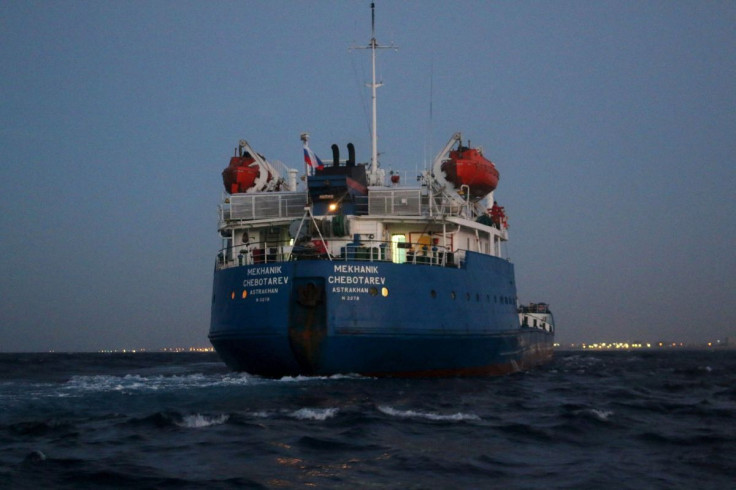Russian Destroyer Holds Drills Defending Oil Tankers From Western Attacks In East China Sea
KEY POINTS
- The drill was conducted by Russia's Pacific Fleet destroyer Admiral Panteleyev
- The destroyer "detected and intercepted the enemy’s air electronic target"
- Analysts said the drill was to show the U.S. that Russia's oil trade is inviolable
As the West continues to impose severe sanctions on Russia, a Kremlin warship conducted a drill to practice protecting oil tankers from air attacks in the East China Sea.
The crew of Russia's Pacific Fleet destroyer Admiral Panteleyev conducted the drill wherein it shielded a medium-sized offshore oil tanker from airstrikes by imaginary enemies, reported South China Morning Post, quoting Russian media outlets.
The report added that the destroyer "detected and intercepted the enemy’s air electronic target." According to Russian media, Admiral Panteleyev is a Russian Navy Udaloy-class destroyer that left Vladivostok with the tanker for missions in the Asia-Pacific region. It trained with a Ka-27PS helicopter in the East China Sea late last month.
The drill comes almost a month after Russia held a massive military exercise near the disputed Kuril islands, involving over 3,500 troops, Su-35 fighters, Mi-8 helicopters, Bastion-P coastal defense system, T-72B3 tanks and Orlan-10 multi-purpose UAVs.
The destroyer's drill was also aimed at showing Kremlin's military might and the air-defense capability of Russian naval forces after the Moskva disaster. "The Russian destroyer’s exercise in the East China Sea is aimed to increase its capability of countering potential Western interception of its tankers," Li Jie, a navy analyst based in Beijing, told South China Morning Post.
"Under the Western sanctions, Russia is worried that its oil tankers and freighters might be seized. Accompanying warships can protect these tankers by detecting and intercepting the enemy’s air target in time," Li added.
Yue Gang, a former PLA colonel, too told the news outlet that the destroyer’s escort exercise was "to show the United States and its allies that the Russian crude oil trade is inviolable" as well as to counter Western sanctions imposed on Russia’s oil exports. Yue added that Russia wanted to avoid the seizure of its tankers by other countries. "The US seizure of Iranian tankers in the past cannot be repeated on Russia," Yue said.
This comes as reports claim Russian oil tankers were turning off radio signals and "going dark" to avoid detection amid greater scrutiny by the West of Russian oil and gas exports.
Besides, conducting the drill in the East China Sea had other purposes, since both the U.S. and Japan had military bases in the region. "By choosing the East China Sea, Russia was also brandishing its close ties with China," Yue said.
Japan's tough stance on territorial disputes with Russia has also triggered Russia, thinks Zhou Chenming, a researcher at the Yuan Wang military science and technology think tank in Beijing. "The further deepening of the US-Japan alliance has also led to Russia’s concerns about tension in the Far East. This is also the starting point for Russia to strengthen military activities in the region,” he told South China Morning Post.

© Copyright IBTimes 2024. All rights reserved.




















